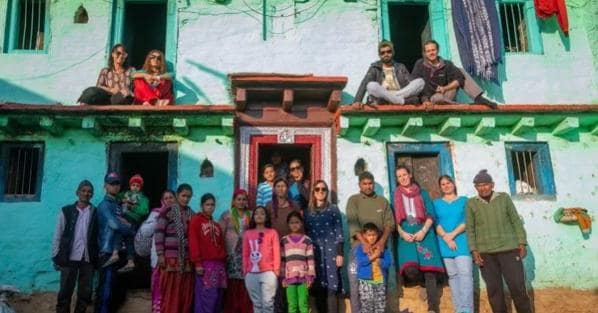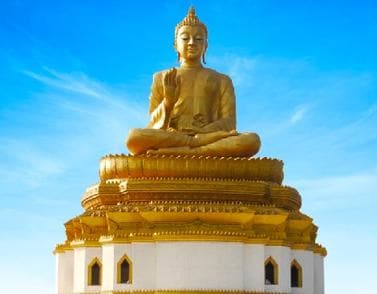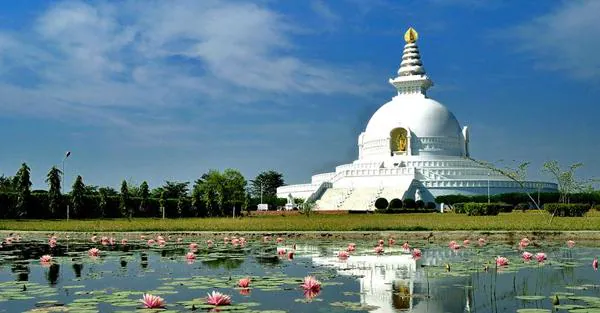It was published a century ago. Hermann Hesse certainly did not imagine that his Siddhartha would have prompted many generations of readers to search in India for the places that had inspired him and above all to try to trace the young man, precisely Siddhartha, and his childhood friend Govinda, to enjoy today. , of what life gives you, from the places you cross to the encounters you make. Since then India has changed and now it looks really similar to many Western countries, just as the way of traveling and experiencing emotions seems far from the ascetic one that is imbued with the novel, published in Italy by Adelphi. There remain, however, some places where the soul of the story by the German writer, Nobel Prize winner in 1946, can still be traced in a certain way.
In Dev Bhumi, the land of the gods, between trekking in the Himalayas, yoga and solidarity cooking classes
We are in the north, almost close to the border with Tibet: the mountains of the Himalayas in Uttarakhand, also known as Dev Bhumi, the land of the gods, have a network of paths where nature is amazing and generous among veiled waterfalls from the fog, ancient temples and forests invaded by rhododendrons. It is here that Mrs Rawat-Hahne, a human rights activist, created a non-profit organization, the Bachan Charitable Trust, which follows, among other initiatives, the eco-friendly travel agency Fernweh Fair Travel.
Local women who live alone, or who have been victims of domestic violence, have cleaned and tidied up their homes to accommodate travelers, cook for them and drive them to the mountains. You will discover villages like Gopeshwar, Mandal and Chopta, where you practice yoga with the locals, learn to cook, admire the wild orchids of the Kedarnath Wildlife Sanctuary. The accommodations are spartan: they are straw huts and marsh reeds. The proceeds are used to support environmental and educational programs. And time is spent in virgin and authentic places.
The ancient stupas of Shravasti, crossroads of the most important trade routes
Going to visit the archaeological site of Shravasti, in the north-eastern part of Uttar Pradesh, has a great literary and religious value. Capital of the ancient Indian kingdom of Kosala, the Buddha spent most of his time here after receiving enlightenment. It rises near the Rapti river, close to Nepal. Many disciples of the Buddha were trained here and have listened to his sermons. It is also a sacred place to Hinduism and Jainism, as demonstrated by the manuscripts relating to these three different creeds found by excavating in Shravasti, which was the crossroads of the main trade routes of the continent. Excavations in recent decades have resulted in the formation of a small town dedicated to tourism and the pilgrimage of devotees who come here from all over the world. Ancient stupas, especially those of Anathapindika and Angulimala, together with the smaller ones of Jetavanaramaya, more modern and gigantic statues of the Buddha make the journey to this city populated by monks really stimulating, even on an artistic level.
In Lumbini, just across the border with Nepal, where the Buddha was born
The gardens of Siddhartha in Lumbini will remain etched in the memory of those who will spend a few hours there praying, observing people, their faces, behaviors, gestures of devotion. Buddha would have been born right here, just across the border between India and Nepal. Unesco World Heritage Site, there are the temples and monasteries of Theravada, Mahayana and Vajrayana. The monks are very fond of the sacred Bodhi tree, the column of Ashoka and the temple of Queen Maya, where the Buddha was born: this can be understood from the number of people who from dawn to late at night find themselves there in a contemplative attitude. The Flame of Eternal Peace is another site where you can grasp the spirit of peace that hovers in this village that has grown over time thanks to travelers and faithful, but which has been able to preserve that atmosphere of serenity, acceptance of life, its mysteries and events. which had so impressed Hermann Hesse.
In the footsteps of Siddhartha, a century after Hermann Hesse’s story



